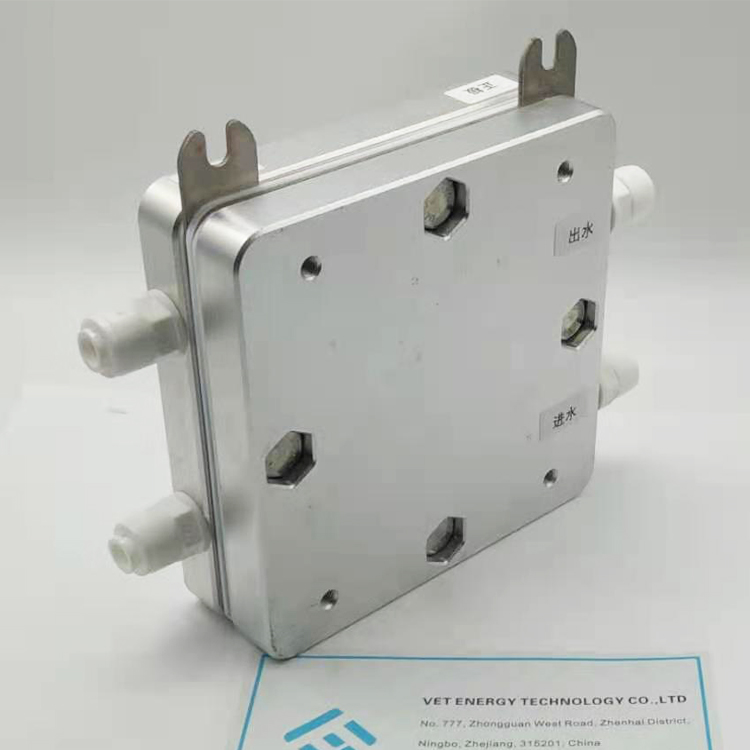PEM Electrolyzer: A Key Technology for Green Hydrogen Production
2025-03-27
As the world shifts toward renewable energy and sustainable solutions, hydrogen is gaining attention as a clean fuel. Among various hydrogen production technologies, the PEM electrolyzer stands out for its efficiency and reliability. This advanced system plays a crucial role in producing green hydrogen, which can be used in industries such as transportation, energy storage, and manufacturing.
What Is a PEM Electrolyzer
A PEM electrolyzer (Proton Exchange Membrane electrolyzer) is a device that splits water into hydrogen and oxygen using electricity. It consists of a membrane electrode assembly (MEA), which includes a proton exchange membrane, catalysts, and electrodes. When an electric current passes through the system, water molecules break down, producing high-purity hydrogen at the cathode and oxygen at the anode.
How a PEM Electrolyzer Works
1. Water Supply: Purified water enters the electrolyzer.
2. Electrolysis Process: An electric current passes through the proton exchange membrane, splitting water into hydrogen and oxygen.
3. Hydrogen Collection: The hydrogen is separated and stored for later use.
4. Oxygen Release: The oxygen is either vented or captured for industrial applications.
Advantages of PEM Electrolyzers
High Efficiency
PEM electrolyzers operate at a high efficiency, typically converting 80 to 90 percent of electrical energy into hydrogen.
Fast Response Time
Unlike other electrolyzers, PEM electrolyzers can quickly adjust to fluctuations in renewable energy sources like solar and wind, making them ideal for grid balancing.
Compact and Scalable Design
PEM electrolyzers have a compact structure, allowing easy integration into various industrial and commercial applications. They can be scaled up or down depending on the required hydrogen production.
High-Purity Hydrogen Production
The hydrogen generated by PEM electrolyzers has very low impurity levels, making it suitable for industries such as fuel cells, aerospace, and electronics.
Eco-Friendly Process
Since PEM electrolyzers use renewable electricity and water, they produce zero carbon emissions, making them an essential part of the green hydrogen economy.
Applications of PEM Electrolyzers
Hydrogen Fuel Cells
PEM electrolyzers produce high-purity hydrogen used in fuel cells for electric vehicles, backup power systems, and portable energy solutions.
Energy Storage
Excess renewable energy from solar or wind farms can be converted into hydrogen and stored for long-term energy supply.
Industrial Processes
Industries such as steel manufacturing, ammonia production, and chemical refining use hydrogen as a raw material, making PEM electrolyzers a valuable tool for reducing carbon footprints.
Aerospace and Space Exploration
Hydrogen from PEM electrolyzers is used in rocket propulsion and life-support systems for space missions.
Challenges and Future of PEM Electrolyzers
Despite their advantages, PEM electrolyzers face challenges such as high initial costs and reliance on rare materials like platinum for catalysts. However, ongoing research aims to develop cost-effective and sustainable alternatives, improving efficiency and affordability.
With advancements in hydrogen storage, transportation, and infrastructure, PEM electrolyzers are expected to play a key role in achieving a carbon-neutral future. Governments and industries worldwide are investing in hydrogen strategies, making PEM electrolyzers a critical component of the global energy transition.
Conclusion
PEM electrolyzers are at the forefront of green hydrogen production, offering a clean, efficient, and scalable solution for energy needs. As renewable energy adoption grows, these electrolyzers will become even more essential in powering the future with sustainable hydrogen.



